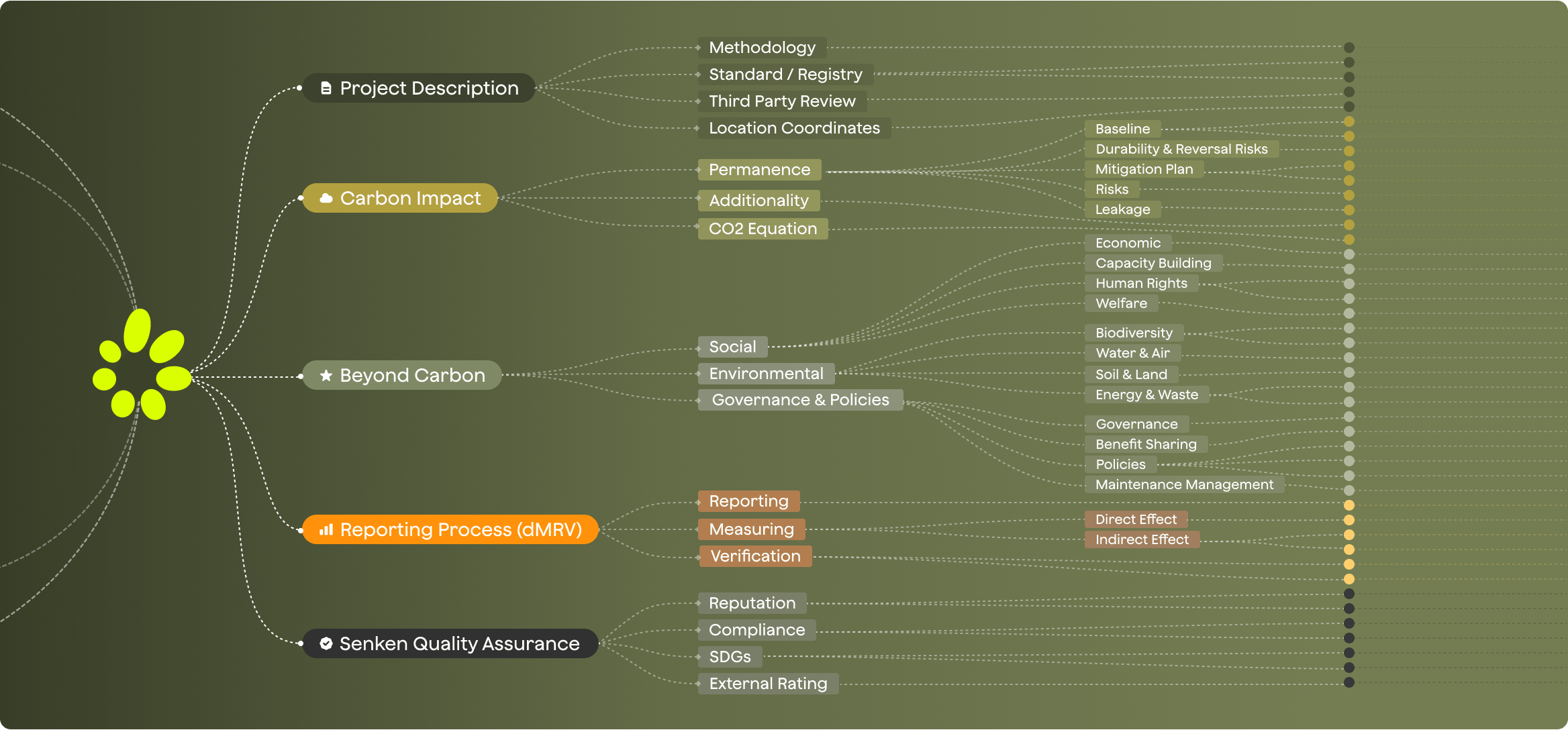A high-quality carbon credit is characterised by several key attributes that ensure its effectiveness in mitigating greenhouse gas emissions and contributing to environmental sustainability.
What defines a high-quality carbon credit
1. Additionality
Carbon credits must originate from projects that demonstrate "additionality," meaning they lead to emissions reductions or removals that wouldn't have occurred without the project's intervention. This criterion ensures that the credits genuinely contribute to emissions reductions beyond business-as-usual activities.
2. Adherence to recognised standards
High-quality carbon credits adhere to rigorous and internationally recognised standards, such as the Verified Carbon Standard (VCS) or the Gold Standard. These standards provide a robust framework for measuring, reporting, and verifying emissions reductions, ensuring transparency and credibility.
3. Third party verification
Credits should undergo third-party verification by accredited organisations, such as TÜV Nord, or other ICROA-endorsed institutions, to validate their environmental impact.
4. Digital Measurement Reporting Verification (dMRV)
Over 90% of buyers rank MRV as a major factor in credit purchase decisions. As the spotlight on carbon offsets grows, buyers want to ensure that the credits they buy have an impact that’s easy to prove and defensible against claims of greenwashing.- BCG Study
5. Ratings
It is important to assess whether a project has been evaluated and assigned a specific rating score by reputable rating partners, such as BeZero, Renoster, and Sylvera. These rating partners specialise in objectively evaluating the quality and environmental impact of carbon offset projects.
These ratings serve as an additional layer of validation, helping to ensure that the selected carbon credits meet high standards and align with your company's sustainability goals.
6. Transparency and Traceability
Clear and accessible project information, including methodology, implementation, and results, is essential for credibility.
Senken's Sustainability Integrity Index (SII)

The role of standards, registries, and agencies in quality
Although there is no central body responsible for the regulation of the voluntary carbon market, unlike the compliance market, there are several players who act as trusted third parties within the market, and who provide services that allow buyers to assess the quality of any given credit.
Carbon credit registries
Registries serve as centralised repositories for recording, tracking, and confirming the ownership of carbon credits. They also ensure the retirement of credits to prevent double-counting and maintain transparency in the carbon market.
Carbon credit rating agencies
Agencies assess the quality and credibility of carbon offset projects. They employ data-driven methods, such as remote sensing and satellite data, to verify emissions reductions and assign ratings to projects. These ratings empower companies to make informed decisions when purchasing high-quality carbon credits that align with sustainability goals and contribute to meaningful emissions reductions, thus accelerating their decarbonisation strategies.
These two agencies are well-regarded for their expertise in evaluating the quality and impact of carbon offset projects. Their ratings provide valuable insights into the effectiveness and credibility of projects, helping companies like yours select high-quality carbon credits that align with sustainability goals and contribute to meaningful emissions reductions.
- BeZero is a prominent carbon credit rating agency known for its comprehensive evaluation of carbon offset projects. They assess projects based on their environmental integrity, additionality, and transparency. BeZero provides detailed project ratings that help companies make informed decisions when purchasing carbon credits.
- Sylvera is a leading player in the carbon credit rating space, specialising in data-driven assessments of carbon offset projects. They use advanced technology and satellite data to monitor and verify emissions reductions, offering transparent and reliable project ratings. Sylvera's approach enhances the credibility and accuracy of carbon credit assessments.
Carbon credit standards
Standards are organisations that set criteria and methodology for calculating a carbon credit. These standards are widely accepted and therefore act as a kind of quality mark for a carbon credit if it has been created under that standard. Below are three examples of the most widely accepted standards.
- Verified Carbon Standard (VCS): The VCS is one of the most widely recognised standards for carbon credits. It sets rigorous criteria for quantifying and verifying emissions reductions, ensuring transparency, additionality, and quality. Projects that adhere to VCS guidelines undergo third-party verification and receive VCS certification.
- Gold Standard: The Gold Standard is another prominent standard that emphasises not only emissions reduction but also sustainable development and co-benefits for local communities. It is particularly known for its stringent additionality requirements and comprehensive assessment of environmental and social impacts.
- Clean Development Mechanism (CDM): Established under the Kyoto Protocol, the CDM allows projects in developing countries to earn Certified Emission Reductions (CERs). While CERs have been widely used, their future role is evolving, and their usage may vary based on international climate agreements.
.svg)